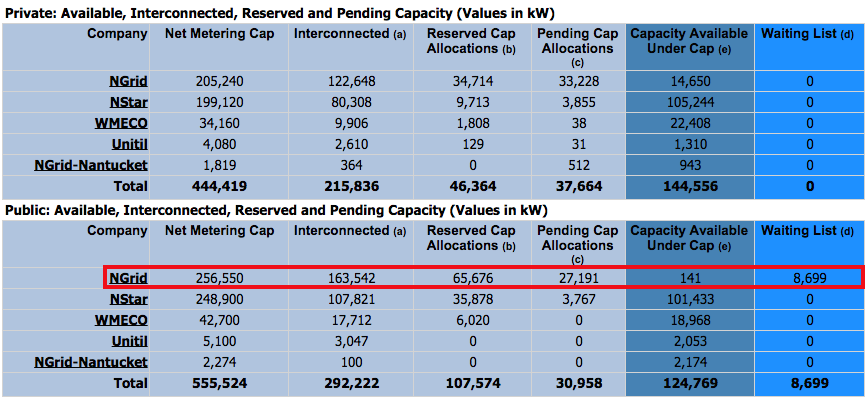Overview
Next year, telecommunications providers will phase out their support of more than 22 million 3G communications devices—including the revenue-grade meters used for measuring and recording the production of solar energy systems. As a result, these meters will fall out of compliance for the minting of SRECs and receipt of quarterly payments to solar system owners.
To prevent this sunset from impacting you, SRECTrade has partnered with 365 Pronto to remove and dispose of old revenue-grade meters and replace them with new revenue-grade meters that follow the regulations and network communications needed for verified SREC payments to system owners.
While there is no fine or penalty for not having the meter swapped out, system owners who choose not to upgrade their meter(s) could soon stop receiving SREC payments, negatively impacting the expected return on investment from their solar installation(s).
If you have not yet been contacted by us, don’t worry, we’ll be in touch in the coming weeks as the program rolls out.
Pricing, Payment, and Rollout
System owners are responsible for the cost of this replacement equipment and related labor. SRECTrade is committed to helping our customers keep costs low, so we have negotiated preferred pricing with 365 Pronto, our technology and logistics partner. This pricing is conditional on the system owner registering for the replacement in a timely manner when the rollout has reached their geographical region.
The rollout with be conducted in phases and will begin in Massachusetts. If you register before Saturday, November 20, 2021, you’ll be eligible for a 20% in-market price discount on your meter and installation.
If you delay the registration—or do so outside the period within your region—we cannot guarantee the agreed-upon preferred price.
Massachusetts SREC Market
Current SREC market prices are around $300/MWh/SREC. For the average system size of 7 kW, this represents a potential loss of $2,100 per year in quarterly SREC credit payments for Massachusetts residents. For systems larger than the average, the loss is even greater.
Next Steps
If you are a Massachusetts resident and have been recently contacted by us regarding your SREC payments, the process begins by visiting a simple, step-by-step, online interface to register your system:
Replace Your Revenue-Grade Meter – Sign Up with 365 Pronto
Again, if you have not yet been contacted by us, don’t worry, we’ll be in touch in the coming weeks as the program rolls out.
We estimate that your meter will arrive 30-40 days after you purchase it. Once your 365 Pronto service provider has your meter in stock, they will reach out to you to schedule the installation. In many cases, the homeowner does not have to be present during the installation.
Frequently Asked Questions
- What is a revenue-grade meter?
- The meter is what your solar system uses to communicate your solar output withthe SREC tracking registry. Without this meter, the registry cannot determine how many SRECs to mint to you.
- Why is this replacement necessary?
- Wireless communications protocols become obsolete over time, and the wireless carriers (Verizon, AT&T, etc.) are phasing out old networks (2G/3G) in favor of faster, upgraded networks. Many solar systems installed more than three years ago likely have equipment designed for the network technology of the time (2G/3G).
- What is 365 Pronto?
- 365 Pronto is our technology and logistics partner. It is a technology platform company matching asset owners (you) with an on-demand qualified workforce (local service providers) through automated technology. Because of its unique model, it can service the entirety of SRECTrade’s systems under trading.
- How much will a new meter cost?
- Through our partnership, we were able to negotiate a special lower-than-market price just for Massachusetts SREC Trade customers. This price includes all parts and installation, plus a one-year cellular data plan.
- You should act now, because next month, 365 Pronto providers will be conducting work in your area. If you reserve your meter replacement slot by Saturday, November 20, 2021, you can secure a 20% in-market price discount on your meter and installation.
- You will need to register and purchase your replacement meter before Saturday, November 20, 2021, to secure this discount.
- Can I use my original installer?
- Yes, you may contact your installer to ask about having this work performed. However, providers who are not part of the 365 Pronto network may not be able to guarantee the same price. This is why it is important to book your meter replacement with 365 Pronto before Saturday, November 20, 2021 and reserve your discounted price.
- When will my new meter be installed?
- We expect that your meter will arrive 30-40 days after you purchase it. Once your 365 Pronto service provider has your meter in stock, they will reach out to you to schedule the installation. At that time, 365 Pronto will process your payment for the installation of your meter. In many cases, the homeowner does not have to be present during the installation.
- Do I need to do anything once the new meter is installed?
- No. Once your new meter is installed, it will begin to communicate your solar output with SRECTrade as normal. If you have questions about your account, please email ma.renewables@srectrade.com.
- How do I know my meter is working?
- We understand that there is a delay between when your output is recorded and when your SRECs are minted. We will provide email confirmation to let you know that the system is working. If you have questions about your account, please email ma.renewables@srectrade.com.
*Disclaimer: Price is subject to i) sales tax on equipment and ii) change, based on availability and offering acceptance timing. We expect that your meter will arrive 30-40 days after you purchase it. Once your 365 Pronto service provider has your meter in stock, they will reach out to you to schedule the installation.
Tweet

